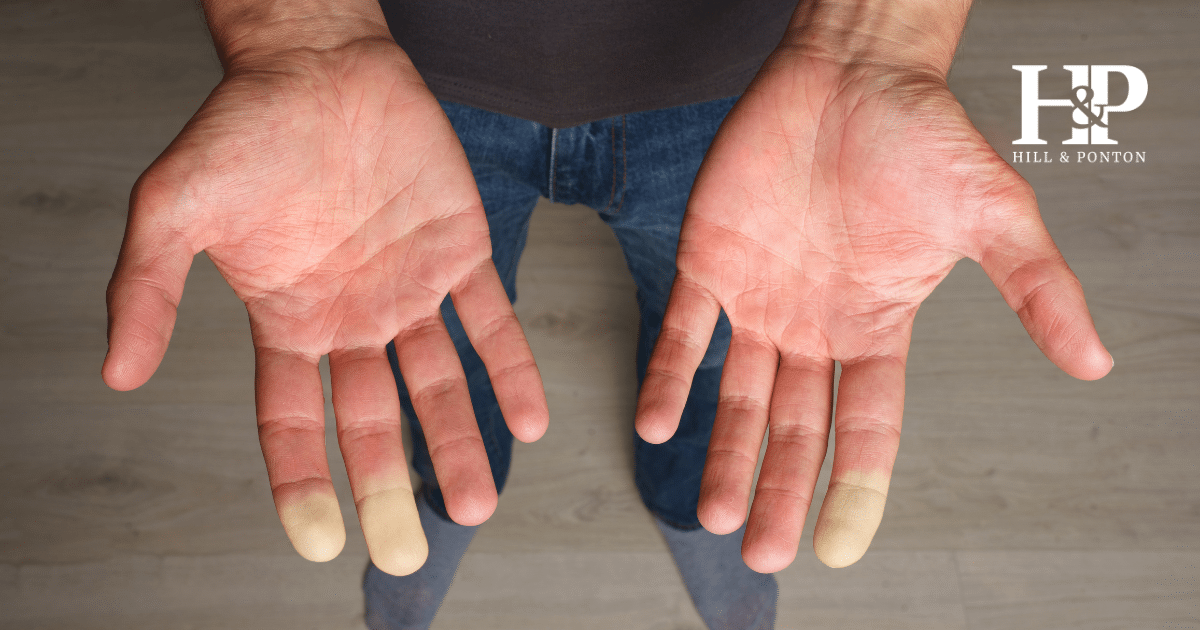Raynaud’s Syndrome, also known as Raynaud’s Disease, is a condition that can lead to significant pain and functional limitations, especially for veterans whose symptoms were aggravated or caused by their military service.
Raynaud’s Disease Symptoms and Related Conditions
Raynaud’s Syndrome is a vascular disorder characterized by the narrowing of small arteries, typically in the fingers and toes, in response to cold or emotional stress. This narrowing reduces blood flow to the extremities, leading to discoloration (white or blue), numbness, and pain in the affected areas.
In severe cases, it can result in sores or tissue damage. Raynaud’s can be a primary condition or secondary to autoimmune disorders such as rheumatoid arthritis, lupus, Sjögren’s syndrome, scleroderma, or frostbite or repetitive use.
VA Disability Rating for Raynaud’s Syndrome
The VA rates Raynaud’s Syndrome under Diagnostic Code 7117, which considers the frequency and severity of symptoms such as color changes, pain, numbness, and the presence of ulcers.
Ratings for Raynaud’s Syndrome can range from 10% to 100%:
- 10% Rating: Characteristic attacks occurring one to three times per week.
- 20% Rating: Characteristic attacks occurring four to six times per week.
- 40% Rating: Characteristic attacks occurring at least daily.
- 60% Rating: Two or more digital ulcers plus characteristic attacks.
- 100% Rating: Two or more digital ulcers plus auto-amputation of one or more digits and characteristic attacks.
These ratings are based on the frequency and severity of the characteristic attacks, which include symptoms like pain, numbness, and color changes in the extremities.
Master the VA Disability Claims Process
An Example of Securing a Higher Rating for Raynaud’s Syndrome
Background: A veteran who served from August 1986 to June 1995 sought an increased disability rating for Raynaud’s syndrome. Initially, the VA assigned a noncompensable rating (0%), which was later increased to 40%. The veteran also applied for Total Disability based on Individual Unemployability (TDIU) due to her inability to work.
How the Veteran Won This Claim
- Consistent Medical Documentation: The veteran’s repeated reports of symptoms and detailed medical exams played a crucial role. The presence of digital ulcers, a key factor for a higher rating, was well-documented.
- Detailed VA Examinations: The VA exams consistently noted the severity of the veteran’s symptoms, including pain, discoloration, and ulcers, which matched the criteria for a 60% rating under VA regulations.
- Impact on Employment: The veteran demonstrated that her condition made it impossible to maintain employment, which helped secure the TDIU rating.
Outcome: The veteran successfully secured a 60% disability rating for Raynaud’s syndrome, backdated to August 29, 2005, and an earlier effective date of December 1, 2007, for her TDIU award. This case highlights the importance of thorough medical evidence and demonstrating the impact of the condition on daily life and employment.
Strengthening Your Raynaud’s Syndrome VA Claim
These case studies highlight the importance of thorough documentation and medical evidence when filing a claim for Raynaud’s Syndrome. Veterans can take several steps to strengthen their claims:
- Detailed Medical Nexus: Ensure that your claim includes a medical opinion clearly linking your Raynaud’s Syndrome to your military service or a service-connected condition.
- Symptom Logs: Keep a daily log of your symptoms, noting the frequency, severity, and impact on your daily activities. This can be crucial in demonstrating the full extent of your condition.
- Appeal if Necessary: If your initial rating seems too low, consider appealing the decision with additional evidence, as demonstrated in the cases above.
How to File a VA Claim for Raynaud’s Syndrome
To file a claim for Raynaud’s Syndrome as a service-connected condition or secondary to another service-connected condition:
- Gather Medical Evidence: Collect all relevant medical records, including logs of your symptoms and statements from your healthcare providers linking the condition to your service.
- Complete VA Form 21-526EZ: Use this form to apply for disability compensation.
- Submit Your Claim: You can submit your claim online through the VA’s eBenefits portal, by mail, or in person at a VA regional office.
- Seek Assistance: Consider working with a Veterans Service Officer (VSO) or legal representative who can help ensure your claim is well-documented and comprehensive.
Raynaud’s Syndrome can significantly affect a veteran’s quality of life but obtaining the appropriate VA disability rating can be challenging. If you’ve been denied benefits for Raynaud’s Syndrome or feel that your rating is too low, please contact us to see if we can help.




